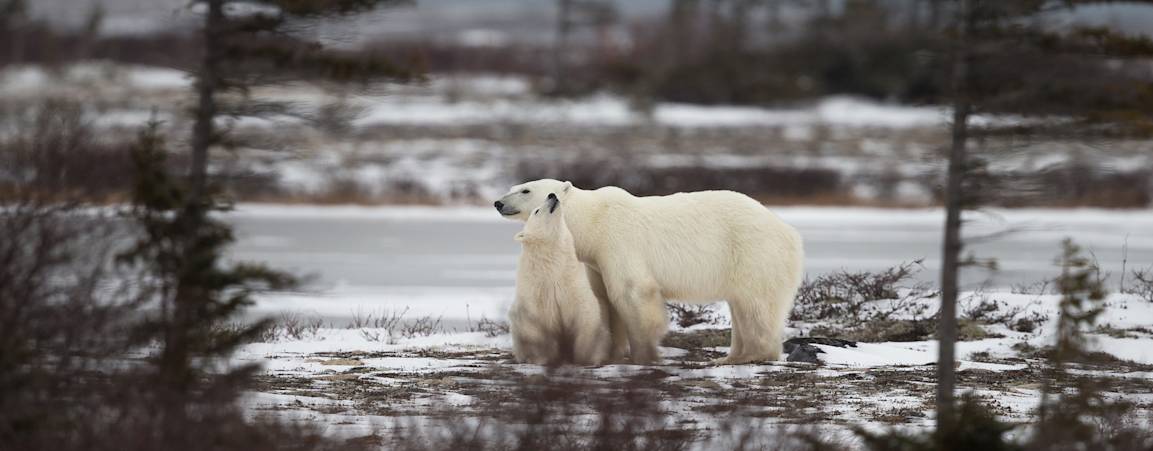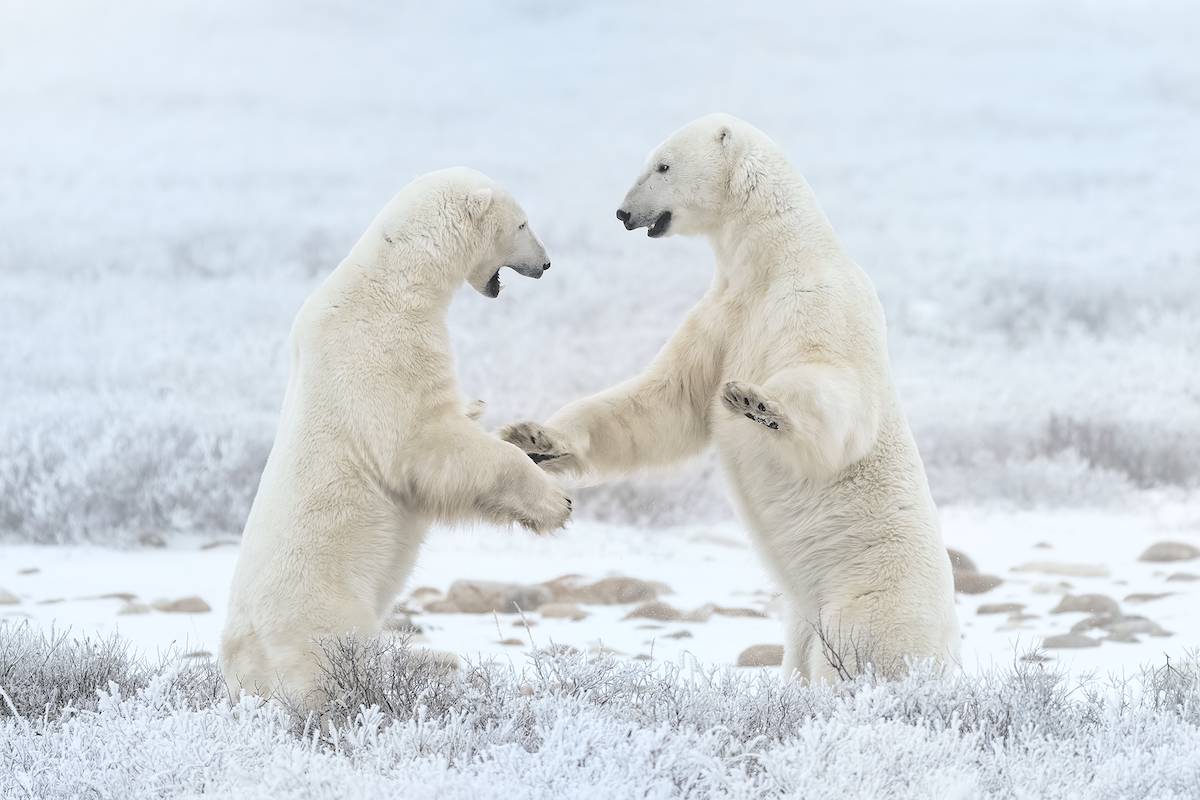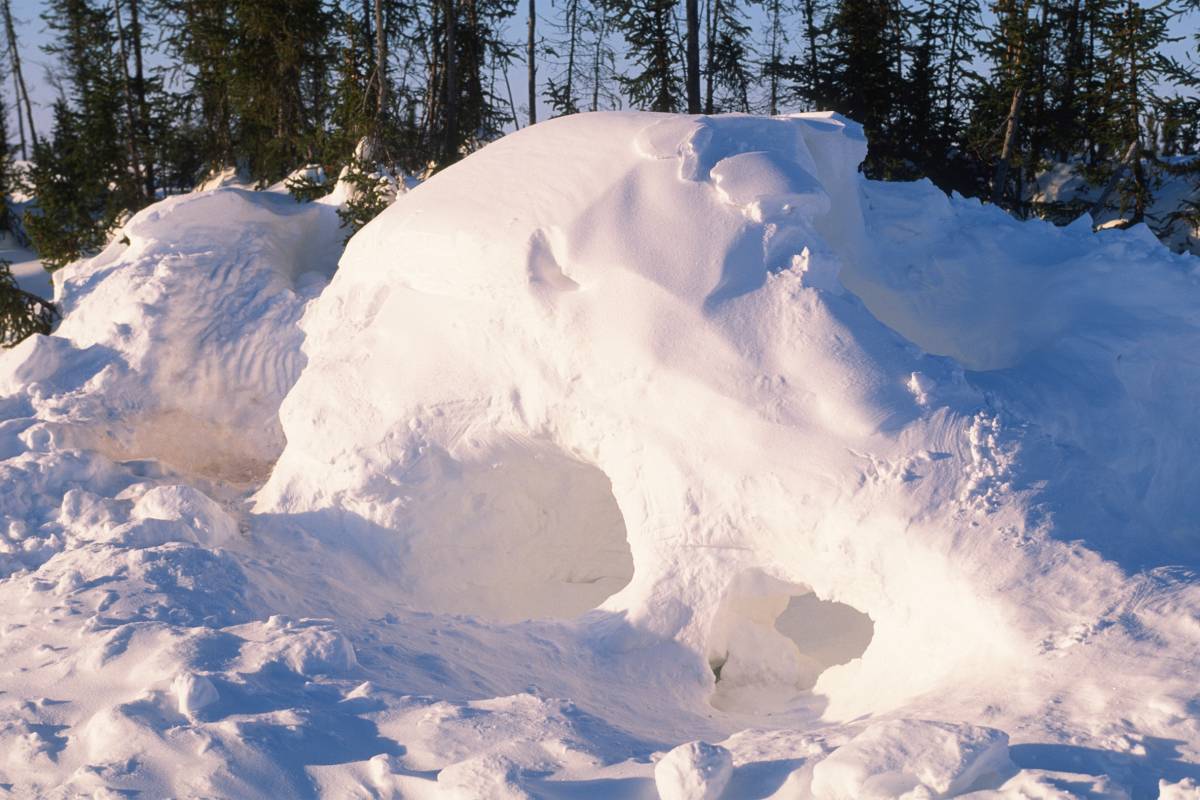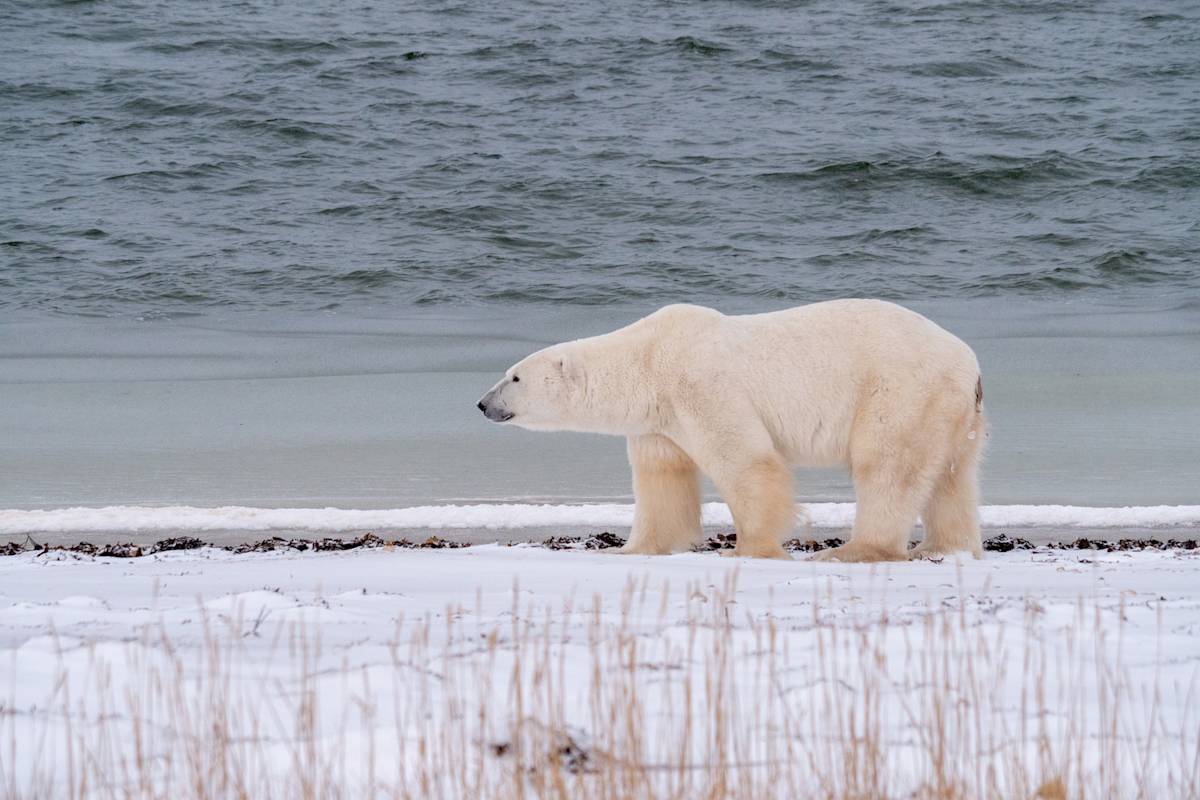Join us on our journey.
Become part of a community committed to protecting polar bears with our free newsletter.
Photo: Tim Auer / Polar Bears International

A threatened polar bear population and the best-studied
As of December 7, 2025
This counter begins when 30% of sea ice in Hudson Bay is left. Research has shown that most polar bears start to abandon sea ice at those low concentrations and swim to land.
Important Fasting Threshold ≈ 180 days
Limit at which up to 21% of adult males and 63% of subadults starve to death
Of the 20 populations of polar bear found in the Arctic, the one in Western Hudson Bay, Canada, is arguably the most comprehensively studied and best known. It is also the one that has been most extensively filmed, photographed, and marveled at, thanks to the tourism industry that has developed around the bears in Churchill, Manitoba. Because of its presence close to some small centers of human population, it is also among the populations that has the most frequent interactions with people; unfortunately, it is also being heavily impacted by climate change.

The Western Hudson Bay population is one of the most southerly of all polar bear populations. As its name implies, it encompasses the western portion of Hudson Bay in Canada, from the Manitoba/Ontario border in the southeast of its range to Chesterfield Inlet in Nunavut in the northwest. The Foxe Basin population is to its north and northeast, and the bears of Southern Hudson Bay are to the east and southeast. The most recent survey, in 2021, estimated a total of 618 bears in Western Hudson Bay, a 27 percent decline in just five years and a continuation of a long-term downward trend. The population is now about half the size it was in the 1980s.

Photo: Dave Sandford
The Western Hudson Bay population is a part of what is known as the “Seasonal Ice Ecoregion,” which encompasses most of the bears of central and eastern Canada. In this area of the Arctic, sea ice melts completely in summer – generally sometime in July, although the precise timing varies from year to year – prompting the bears to come ashore. While they may remain sporadically active on land during the summer, in general they create day beds or curl up in the bush to rest and wait. Pregnant females often settle in or near their earthen dens, where it is cooler and bothersome mosquitoes are less likely to intrude, and rest for several months. Many of these dens were excavated by bears generations ago; over time, they have grown, and continue to grow, as bears’ body heat progressively melts the permafrost beneath their floors.
Come fall, all save the pregnant bears increase their activity and move closer to the coast in anticipation of the bay freezing again and a return to their seal prey. After several months of fasting and resting, they are ready to return to the ice.
From early October onward, bears gather on the tundra along the shores of Hudson Bay, waiting for ice to form. While they wait, they may snack – on an occasional vole or mouse, a bird that strays too close, and even on kelp – but by and large they rest and wait, conserving their energy and trying to keep cool and protect themselves from the fierce winds that blow off the water. It is not uncommon to see a polar bear with its head buried in one of the small willows that dot the tundra as it shelters from the wind, with just its round rump exposed to the elements.
While most bears take it easy, some males engage in what is known as sparring, in which they stand on their hind legs and tussle with each other. This isn’t real fighting but is a means of reinforcing relationships between bears and may establish a hierarchy; it could also be useful in developing and maintaining the muscles that the bears will need later in life for hunting and when competing for females.
As soon as the first coastal ice forms and is thick enough to support their weight, the bears head out in search of seals. They may continue to trek back and forth between ice and land at first, but once the ice is thick and extensive enough, they head out onto the bay until forced to come ashore again the following summer.

Photo: Daniel J. Cox
Not all bears head out on the ice in fall, however. Pregnant females stay behind and enter maternal peat dens along the banks of rivers, streams, and lakes — some of which are more than 200 years old! They generally enter their dens in late October or early November and give birth between late December and early January. When the cubs – normally two of them – are born, they are only about 12 inches long and a little more than a pound in weight; by the time they emerge from the dens in late February and March, they have gorged on their mothers’ milk and grown to 25-30 pounds.
Their emergence from their den is timed to coincide with a veritable Arctic buffet, as spring is when seal pups are born, presenting the mother with an abundance of easy prey. She will not only need to feed her cubs but will be desperately hungry herself: from coming ashore in the summer to leaving the den in late February, she may have gone eight months without food while giving birth and producing rich milk, one of the longest fasting periods of any mammal.

Photo: Dave Sandford
The bears that head towards the coast to catch the earliest ice can often be seen around – and even in – the town of Churchill. The town’s year-round population of 900 swells to several thousand each fall as visitors descend from around the globe to look for polar bears close to town and on the nearby tundra.
In past decades, a polar bear that showed up in Churchill would be a dead bear; since 1983, however, polar bear-human interactions in town have been managed by a Polar Bear Alert program. Signs around town advertise a dedicated phone number – 675-BEAR – that people can use to report bear sightings, and a team of wildlife officers is available to respond to those reports. When a bear does stray too close to or even into town, the first step is to scare it away, often by firing blank shotgun shells; persistent offenders are caught in culvert traps baited with seal meat and held in a “Polar Bear Jail” on the edge of town. They are kept there until they can be released onto the sea ice.
Residents of Churchill are highly “bear aware.” Most leave their vehicle and house doors unlocked, in case someone needs to seek rapid shelter after rounding a corner and coming face-to-face with a bear. Thanks to the town's safety measures, only one person in Churchill has been killed by a bear since 1968, and none since 1983. The last attack was on Halloween night in 2013, and both people recovered.
However, as climate change results in shorter ice seasons, polar bears in search of food are more likely to come into direct conflict with people. Churchill has prepared for this through Bear Smart safety measures that build on its already robust Polar Bear Alert program.

Photo: Kt Miller / Polar Bears International
The polar bears of Western Hudson Bay are especially vulnerable to sea-ice loss caused by a warming climate. Because they must spend summer ashore, every single day they are not on the ice in fall, winter, and spring can have a significant impact. In fact, on average, a polar bear loses a kilogram (2.2 pounds) of body weight every day that it is fasting; and because of climate change, the ice-free period is now three to four weeks longer than it was in the early 1980s. That’s three to four weeks longer that these bears must go without food. That’s an especially dire proposition for pregnant females that are already looking at an eight-month gap between meals between July and February.
One consequence of this has been a decline in body condition in many polar bears in Western Hudson Bay – on average they are, simply, smaller than they were before. (Adult females are even, on average, shorter.) Unsurprisingly, the population’s numbers have fallen substantially – from 1,185 in 1987 to 949 in 2011 and just 618 in 2021. (It should be noted, however, that the 1987 survey used a slightly different methodology.) That fall is driven by declines in adult females and cubs; pregnant females simply too often find themselves without the resources to give birth to and raise cubs. Adult males, which rest through the summer months, have fewer energetic demands when on shore and so we have not yet seen declines in their numbers.

Photo: Kieran McIver / Polar Bears International
Biologist Joanna Sulich answers questions in Polar Bears International House, our Churchill-based interpretive center.
Polar Bears International was essentially birthed on the shores of Western Hudson Bay, growing out of visits to the area by a small group of dedicated enthusiasts. While our work now spans the circumpolar Arctic, we have maintained ours strong connections to the region, and to Churchill, in the decades since.
PBI provides financial and logistical research support to researchers studying the Western Hudson Bay population, from sea ice ecology to population studies. We also conduct our own research projects, including testing new technology. PBI House, our interpretive center in Churchill, offers lectures and information about polar bears and their conservation to visitors during the polar bear, northern lights, and beluga whale seasons and functions as a center for the community year-round. PBI is also supporting Churchill’s efforts to become the world’s first Bear Smart Community, which can serve as a model for others to follow, and is working diligently with communities in the region to develop a comprehensive strategy for coexistence that will enable both people and bears to live safely with each other. And we continue to stream live Polar Bear Cams and offer our series of Tundra Connections webcasts and live chats from the tundra each bear season, as we strive to educate and inform the world about polar bears and the threats that they face from climate change.

Become part of a community committed to protecting polar bears with our free newsletter.